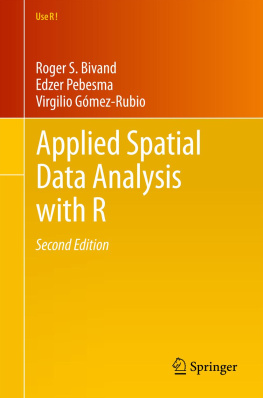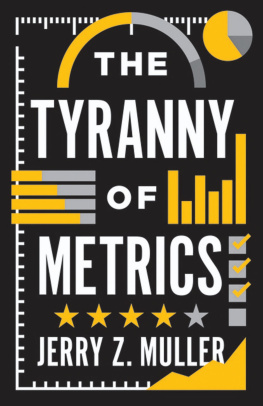The Spatial Dimension of Risk
Through its exploration of the spatial dimension of risk, this book offers a brand new approach to theorizing risk, and significant improvements in how to manage, tolerate and take risks. A broad range of risks are examined, including natural hazards, climate change, political violence and state failure. Case studies range from the Congo to Central Asia, from tsunami and civil war-affected areas in Sri Lanka to avalanche hazards in Austria. In each of these cases, the authors examine the importance and role of space in the causes and differentiation of risk, in how we can conceptualize risk from a spatial perspective and in the relevance of space and locality for risk governance. This new approach endorsed by Ragnar Lfstedt and Ortwin Renn, two of the worlds leading and most prolific risk analysts is essential reading for those charged with studying, anticipating and managing risks.
Detlef Mller-Mahn is Professor of Social Geography and Director of ZENEB (Center for Natural Risks and Development Bayreuth) at the University of Bayreuth, Germany.
Earthscan Risk in Society series
Edited by Ragnar E. Lfstedt, Kings College London, UK
Calculating Political Risk
Catherine Althaus
The Citizens at Risk
From Urban Sanitation to Sustainable Cities
Gordon McGranahan, Pedro Jacobi, Jacob Songsor, Charles Surjadi and Marianne Kjellen
The Earthscan Reader on Risk
Edited by Ragnar E. Lfstedt and sa Boholm
The Ethics of Technological Risk
Edited by Lotte Asveld and Sabine Roeser
Facility Siting
Risk, Power and Identity in Land-Use Planning
Edited by sa Boholm and Ragnar E. Lfstedt
The Feeling of Risk
New Perspectives on Risk Perception
Paul Slovic
Foresight in Action
The Practice of Dealing with Uncertainty in Public Policy
Marjolein B. A. van Asselt, Susan A. van t Klooster, Philip W. F. van Notten and Livia A. Smits
Global Environmental Risk
Jeanne X. Kasperson and Roger E. Kasperson
Hazards, Vulnerability and Environmental Justice
Susan L. Cutter
The Perception of Risk
Paul Slovic
Public Safety and Risk Assessment
Improving Decision Making
David J. Ball and Laurence Ball-King
Risk Governance
Coping with Uncertainty in a Complex World
Ortwin Renn
Risk Management in Post-Trust Societies
Ragnar E. Lfstedt
Risk, Media and Stigma
Understanding Public Challenges to Modern Science and Technology
Edited by James Flynn, Paul Slovic and Howard Kunreuther
Risk, Uncertainty and Rational Action
Carlo C. Jaeger, Ortwin Renn, Eugene A. Rosa and Thomas Webler
The Social Contours of Risk (Volumes 1 & 2)
Jeanne X. Kasperson and Roger E. Kasperson
Social Trust and the Management of Risk
Edited by George Cvetkovich and Ragnar E. Lfstedt
The Tolerability of Risk
A New Framework for Risk Management
Edited by Frdric Bouder, David Slavin and Ragnar E. Lfstedt
Transboundary Risk Governance
Rolf Lidskog, Linda Soneryd and Ylva Uggla
Transboundary Risk Management
Edited by Joanne Linnerooth-Bayer, Ragnar E. Lfstedt and Gunnar Sjstedt
Trust in Cooperative Risk Management
Uncertainty and Scepticism in the Public Mind
Michael Siegrist, Timothy C. Earle and Heinz Gutscher
Trust in Risk Management
Uncertainty and Scepticism in the Public Mind
Michael Siegrist, Timothy C. Earle and Heinz Gutscher
Uncertainty and Risk
Multidisciplinary Perspectives
Edited by Gabriele Bammer and Michael Smithson
Judgment and Decision Making
Baruch Fischhoff
Risk Analysis and Human Behaviour
Baruch Fischhoff
The Spatial Dimension of Risk
How Geography Shapes the Emergence of Riskscapes
Detlef Mller-Mahn
First published 2013
by Routledge
2 Park Square, Milton Park, Abingdon, Oxon, OX14 4RN
Simultaneously published in the USA and Canada
by Routledge
711 Third Avenue, New York, NY 10017
Routledge is an imprint of the Taylor & Francis Group, an informa business
2013 selection and editorial material, Detlef Mller-Mahn; individual chapters, the contributors
The right of Detlef Mller-Mahn to be identified as author of the editorial material, and of the individual authors as authors of their contributions, has been asserted in accordance with sections 77 and 78 of the Copyright, Designs and Patents Act 1988.
All rights reserved. No part of this book may be reprinted or reproduced or utilised in any form or by any electronic, mechanical, or other means, now known or hereafter invented, including photocopying and recording, or in any information storage or retrieval system, without permission in writing from the publishers.
Trademark notice: Product or corporate names may be trademarks or registered trademarks, and are used only for identification and explanation without intent to infringe.
British Library Cataloguing in Publication Data
A catalogue record for this book is available from the British Library
Library of Congress Cataloging-in-Publication Data
The spatial dimension of risk : how geography shapes the emergence of riskscapes / edited by Detlef Mller-Mahn
p. cm. -- (The earthscan risk in society series ; 27)
Includes bibliographical references and index.
1. Human geography. 2. Spatial behavior. 3. Risk--Sociological aspects. 4. Risk perception. 5. Risk management. I. Mller-Mahn, Hans-Detlef. GF95.S68 2012
304.23--dc23
2012019858
ISBN13: 978-1-84971-085-5 (hbk)
ISBN13: 978-0-203-10959-5 (ebk)
Endorsements
The Spatial Dimension of Riskoffers fresh, practical ways of seeing risk, governance and space. It combines previously separate approaches: sociology of risk, geography of hazard and politics of policy. The authors invite us to think about war, flood, disease and terrorism in new ways changing our thought as profoundly as BecksRisk Society20 years ago.Benjamin Wisner, disaster management consultant with 44 years of experience and author of Disaster Risk Reduction: Cases from Urban Africa (Earthscan 2009), Handbook of Hazards and Disaster Risk Reduction (Routledge 2011) and Disaster Management: International Lessons in Risk Reduction, Response and Recovery (forthcoming Routledge 2013)
The book gives the floor to a central dimension of risk, namely its spatiality. Spatiality comes in many different disguises, in the Global South as well as in the North, be it state border policies, propagation of contagious diseases, distribution of drought or landslide risk, or the question on which scale a risk should be managed in a most optimal way. With the concept of riskscapes, the book provides an innovative and comprehensive frame for these widely diverse aspects of risk.Jakob Rhyner, Director of the United Nations University Institute for Environment and Human Security and Vice Rector in Europe of the United Nations University











